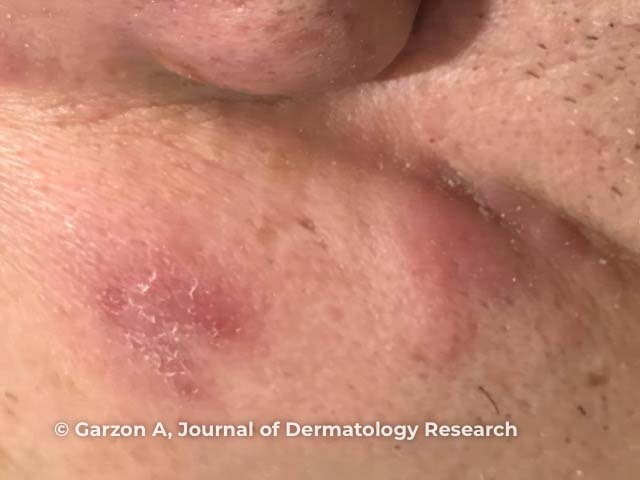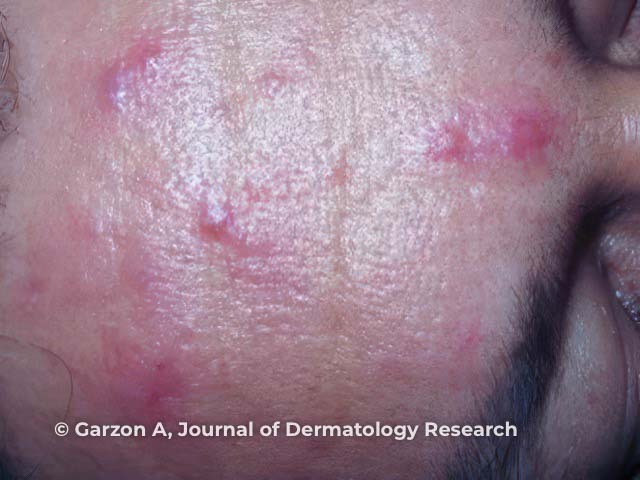Main menu
Common skin conditions

NEWS
Join DermNet PRO
Read more
Quick links
Last Reviewed: January, 2024
Authors: Ian Coulson Consultant Dermatologist, Lancashire, UK (2024); Dr Amanda Oakley, Dermatologist, Hamilton, NZ (2014).
Edited by the DermNet content department
Neutrophilic sebaceous adenitis is a rare inflammatory dermatosis that most commonly affects the face and torso of young men.
It is a form of sebaceous adenitis and is characterised by annular or arcuate plaques on the face and trunk, which on biopsy show a mononuclear infiltrate around blood vessels and follicles, in addition to revealing several necrotic sebocytes accompanied by neutrophils. Similar histological findings may be seen in a rare painful vulval papular eruption.

Indurated plaques on the cheek - histology showed neutrophilic sebaceous adenitis (NSA-patient2)

Papules and plaques on the forehead (NSA-patient1)

Red plaques on the cheek (NSA-patient1)
See more images of sebaceous adenitis
This is a rare condition described in less than 15 individuals. Most were young men; only a few cases were described in women.
The cause is unknown, though a few of the facial cases may have been exacerbated by light exposure. In one case report, there was close association with Demodex mites adjacent to the adenitis.
The facial rash is characterised by acute and recurrent erythematous annular or arcuate oedematous plaques on the cheeks, forehead and torso. Some cases appear to be exacerbated annually by summertime light exposure and in the acute stages, occasional pustules may be seen.
Rarely, similar histological findings are seen presenting as tender papular cyst-like lesions on the vulva in women.
Erythema may be less evident in skin of colour.
There are usually no systemic symptoms associated with this dermatosis, only a single case had associated fever, joint pain, and lymphadenopathy.
A clinical suspicion needs to be corroborated by skin biopsy which demonstrates focal necrosis of sebocytes surrounded by neutrophils and a mononuclear infiltrate surrounding superficial blood vessels and hair follicles.
The genital lesions in women may be confused with:
Several agents have been advocated, none with reproducible or reliable effect, including:
Vulval neutrophilic sebaceous adenitis may respond to:
There is no known way of preventing neutrophilic sebaceous adenitis; those cases exacerbated by light may be prevented by photoprotection.
To date, all cases have undergone eventual spontaneous resolution within 3-4 years.